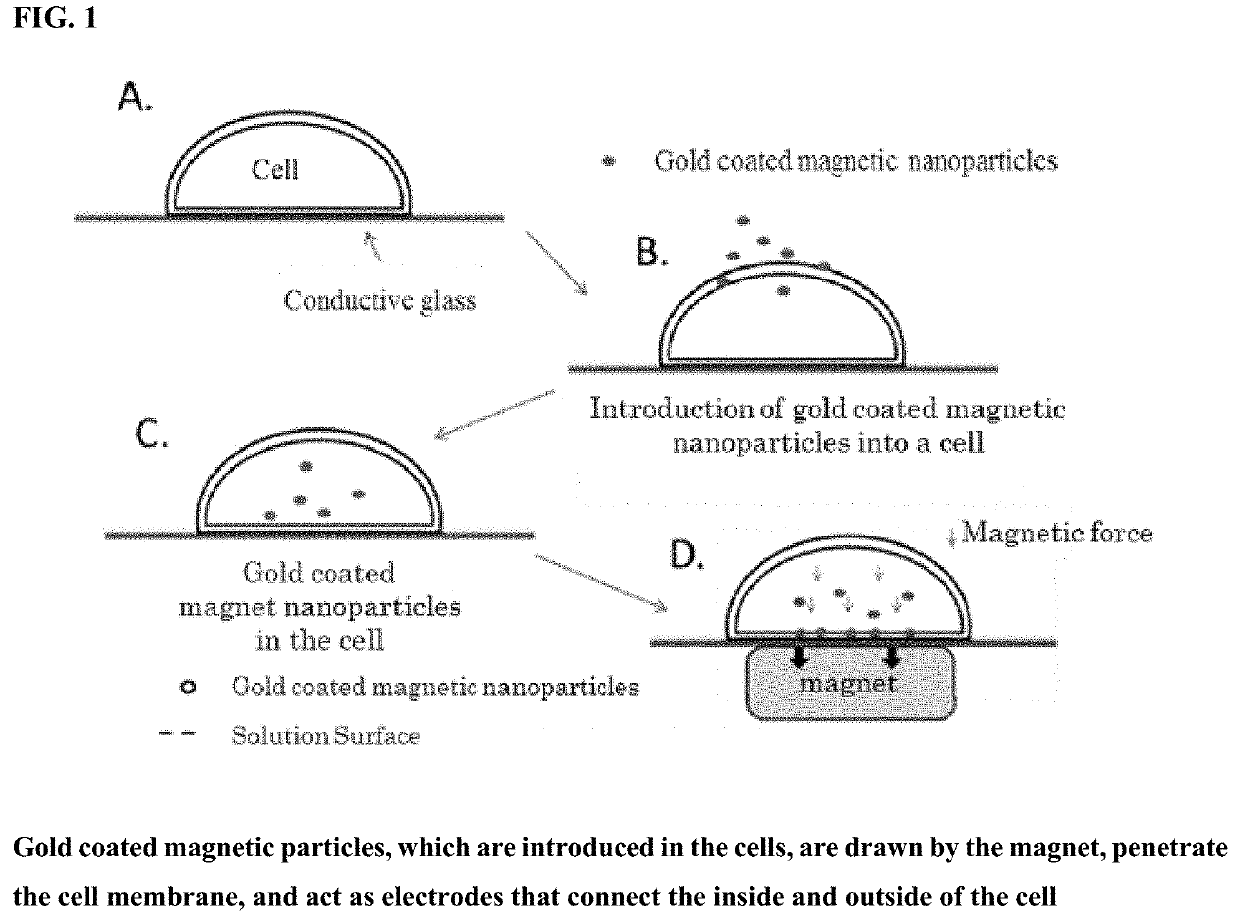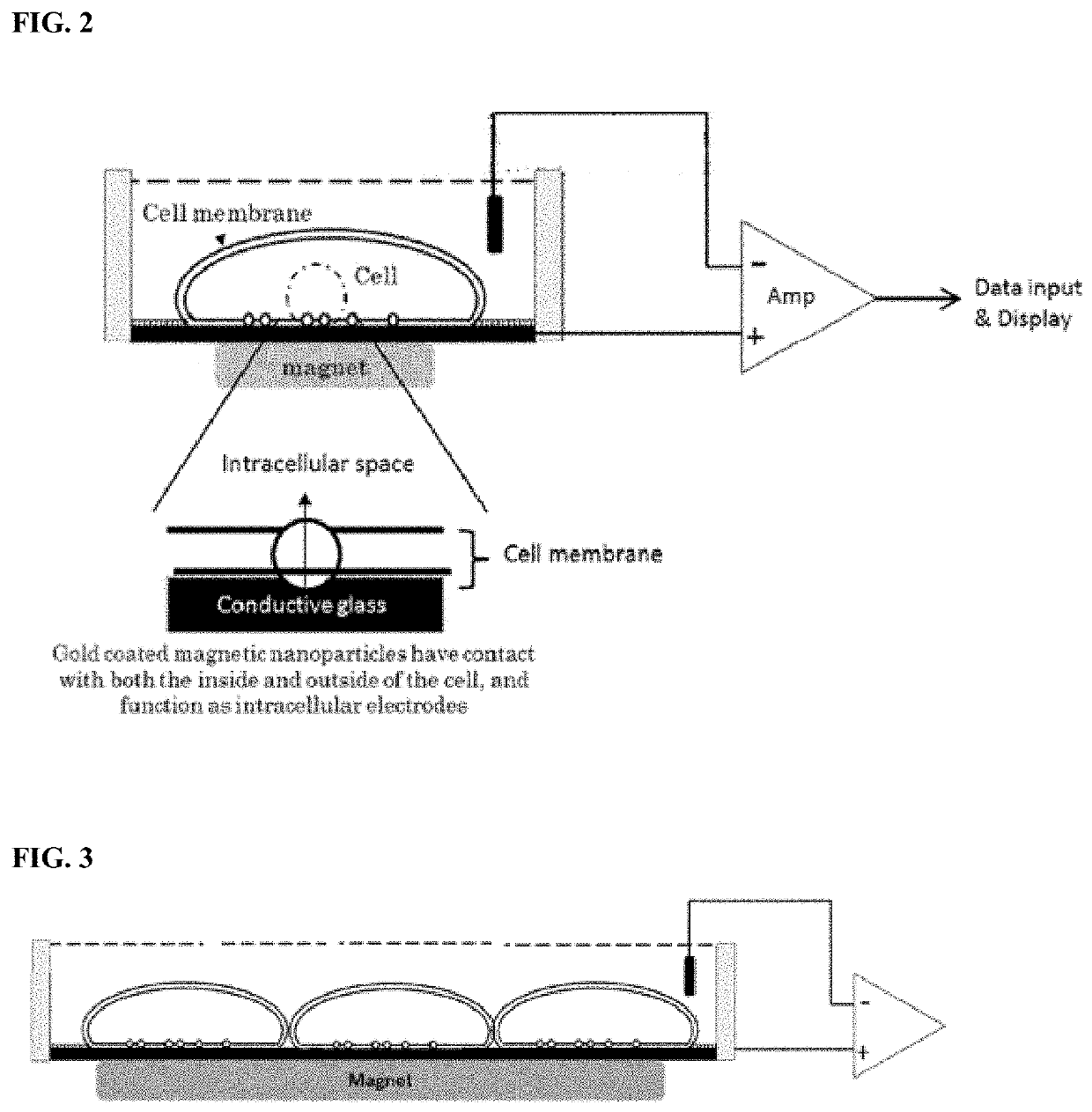Method for measuring intracellular potential with a capacitance type potential measurement device
a capacitance type, intracellular potential technology, applied in the direction of instruments, biochemistry apparatus and processes, material analysis, etc., can solve the problems of inability to accurately measure the intracellular potential, the reliability of data is not as reliable as replacing the manual patch-clamp method, and the cost of auto-clamp test equipment is so high, so as to reduce the damage to cells, accurately measure easily, and fluctuate the intracellular potential
- Summary
- Abstract
- Description
- Claims
- Application Information
AI Technical Summary
Benefits of technology
Problems solved by technology
Method used
Image
Examples
examples
[0210]The present invention will be specifically described below with reference to Examples, but the present invention is not limited to these.
[0211]Other terms and concepts in the present invention are based on the meanings of terms commonly used in the art, and various techniques used for carrying out the present invention are notably defined as those demonstrating the source thereof. Except for this, those skilled in the art can easily and surely carry out the implementation based on publicly known documents and the like. In addition, various analyzes and the like were carried out by applying methods described in analytical instruments or reagents used, instruction manuals of kits, catalogs and the like.
[0212]The description in the technical documents, patent publications, and patent application specifications cited in this specification shall be referred to as the description of the present invention.
(Reference Example 1) Measurement of Intracellular Potential in CHO Cells Stabl...
reference example 7
(Reference Example 7) Measurement of the CHO Cell Endogenous Outward Current by Conductive Nanoparticles Penetrating the Cell Membrane of CHO Cells Cultured on Conductive Plate Electrode Using the Voltage Clamp Method
[0267]In this reference example, by using the intracellular recording electrode constructed by the conductive plate electrode and the conductive nanoparticles inside the cell, it was confirmed that the cell membrane current generated in the cell as well as the intracellular potential can be measured.
[0268]CHO cells were cultured in a culture medium containing Minimum Essential Medium Eagle (Sigma-Aldrich), 10% FBS (BioWest), 40 mM L-Glutamine (Wako Pure Chemical), and Streptolysin O (SLO) (manufactured by Wako Pure Chemical Industries, Ltd.) was reduced using DTT to prepare activated SLO at a concentration of about 5 U / μl.
[0269]CHO cells (5×105) were suspended in gold-coated magnetic nanoparticle transfection solution (5 μl 5×HBPS (1 mM Ca2+, 1 mM Mg2+)) containing 20 μ...
PUM
| Property | Measurement | Unit |
|---|---|---|
| capacitance | aaaaa | aaaaa |
| pore size | aaaaa | aaaaa |
| thickness | aaaaa | aaaaa |
Abstract
Description
Claims
Application Information
 Login to View More
Login to View More - R&D
- Intellectual Property
- Life Sciences
- Materials
- Tech Scout
- Unparalleled Data Quality
- Higher Quality Content
- 60% Fewer Hallucinations
Browse by: Latest US Patents, China's latest patents, Technical Efficacy Thesaurus, Application Domain, Technology Topic, Popular Technical Reports.
© 2025 PatSnap. All rights reserved.Legal|Privacy policy|Modern Slavery Act Transparency Statement|Sitemap|About US| Contact US: help@patsnap.com



